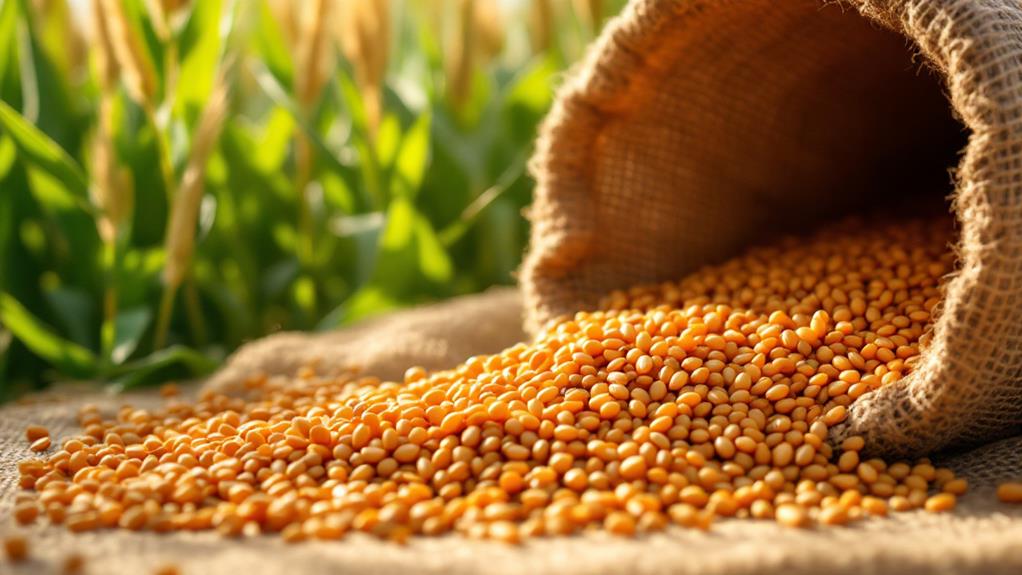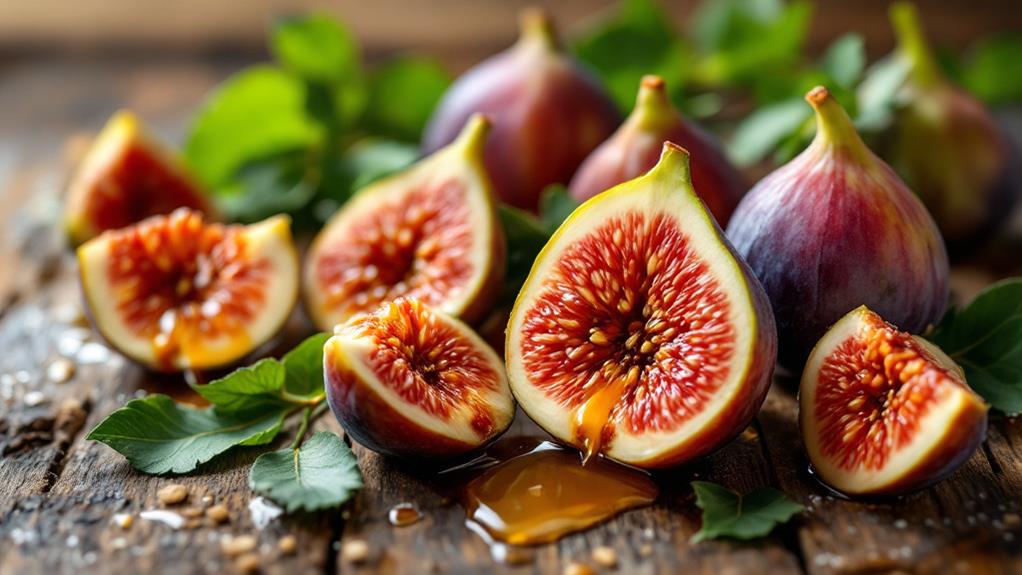Everything You Wanted to Know About Prison Food: What’s Really on the Menu?
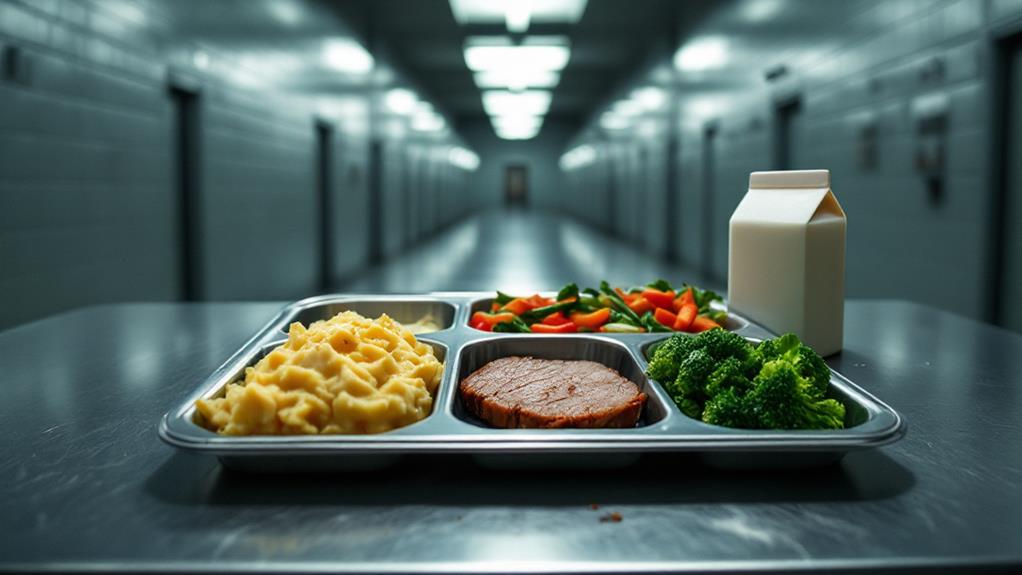
When you picture prison food, think nutritionally balanced but often bland and lacking variety. Inmates get three meals daily, typically high in carbs and low in crucial nutrients, contributing to health issues like obesity and diabetes. Meals are served in chow halls, where seating can reflect social hierarchies, and tensions may arise. While budget constraints often limit the quality, inmates can supplement their diets with commissary purchases or gardening programs. Global prison food quality varies; some countries, like Norway, prioritize gourmet meals. Curious about how these factors impact daily life and rehabilitation in prisons worldwide? There's more to uncover.
Prison Meal Basics
Regarding understanding prison meal basics, you'll find that federal prisons offer inmates three nutritionally balanced meals each day. These meals are typically served in a communal dining area known as the Chow Hall. Breakfast might include items like danishes, cereal, and milk, while lunch and dinner usually feature hot meals such as chicken, hamburgers, or burritos, complemented by a self-service salad bar. Despite budget constraints, these prison meals aim to be nutritionally sound, though many prisoners still report feeling hungry between meals, which raises questions about the quality and quantity of the food provided.
Serving sizes are standardized to guarantee uniformity among all inmates. To prevent double servings, facilities use ID card scanners, maintaining fairness in meal distribution. The average cost per meal is roughly $3, though this can vary across different facilities. While meals are designed to meet basic nutritional needs, the quality could still leave much to be desired. Prisoners often express dissatisfaction with the portions, indicating potential gaps in how these meals fulfill their dietary requirements. Grasping these basics gives you a clearer picture of what prisoners face concerning their daily sustenance in federal facilities.
Nutritional Standards
When you plunge into the nutritional standards of prison meals, you'll find that they're often governed by state laws, which can vary considerably. Some states mandate a minimum of three nutritionally sound meals per day, while others may provide fewer meals due to budget constraints. Despite these laws, the nutritional quality of prison food is typically poor. Many meals are high in carbohydrates yet lack crucial vitamins, proteins, and fibers, falling short of the recommended daily intake.
Accreditation by the American Correctional Association requires that prison menus be reviewed by a licensed dietitian. This is meant to guarantee meals meet basic nutritional requirements. However, in practice, inmates frequently encounter health crises due to inadequate diets. Obesity, hypertension, and other diet-related conditions are rampant in prisons, exacerbated by the lack of proper nutrition.
To combat nutrient deficiencies, many prisons serve fortified powdered drinks. Yet, a significant percentage of inmates still report feelings of hunger between meals. This highlights the gap between the intended nutritional standards and the reality of what's served. While three nutritionally sound meals are ideal, achieving this standard remains a challenge in many facilities.
Social Dynamics in Dining
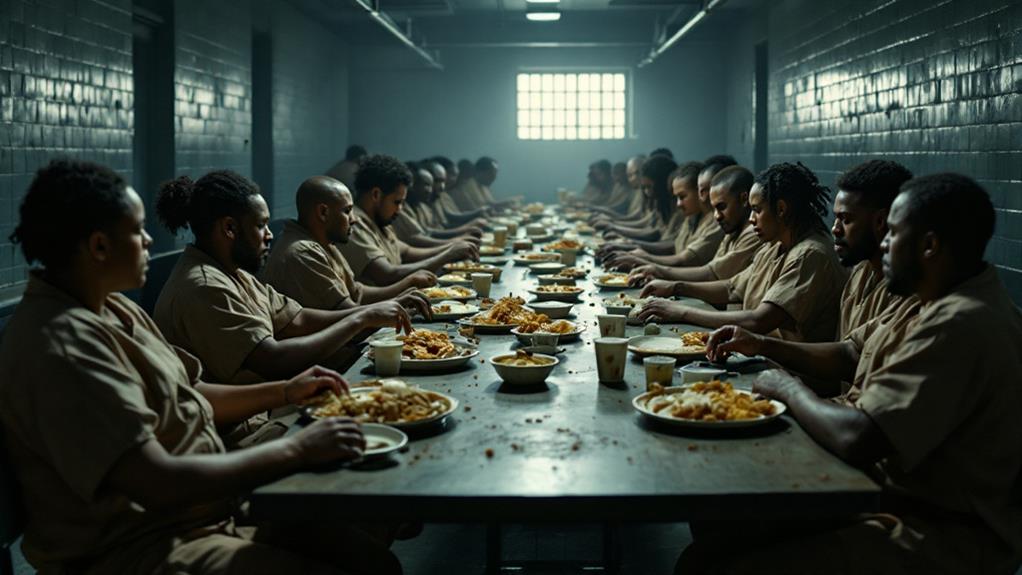
While the nutritional standards of prison meals often fall short, the social dynamics in the dining area add another layer of complexity to the inmate experience. In the Chow Hall, seating is a significant aspect that can dramatically affect an inmate's day-to-day life. Different gangs or ethnic groups often claim specific tables, creating an unspoken social hierarchy. As a new inmate, it's important to consult your cellmates about these seating protocols. Doing so can help you avoid conflicts and guarantee acceptance within established groups.
Understanding these dynamics is critical for maintaining your social standing and safety. Conflicts can arise during meal distribution, as inmates compete for limited food resources, which aren't always of the best quality. Apologizing and showing respect can help mitigate these disputes, fostering better interactions among inmates.
Here's what you need to keep in mind:
- Territorial Seating: Tables are often claimed by specific groups, and knowing where to sit is significant.
- Seeking Advice: Consult your cellmates to navigate seating politics.
- Conflict Resolution: Apologies and respect can go a long way in settling disputes.
Navigating these social dynamics is vital to surviving prison life.
Health Concerns
How do the meals you're served in prison impact your health? Prison food often contains high carbohydrates but lacks protein, fiber, and crucial vitamins. This imbalance contributes to nutritional deficiencies and leaves you feeling hungry between meals, as reported by 93% of incarcerated individuals. The lack of nutrients isn't just about feeling hungry—it's a significant health concern.
You're likely to face chronic conditions like diabetes, hypertension, and high cholesterol due to the high sugar, salt, and refined carbohydrate content in meals. These health issues are exacerbated by the use of fortified powdered drinks, which aim to fill nutritional gaps but often contain artificial sweeteners like aspartame.
Such poor nutrition can also worsen behavioral issues. High-carb, low-nutrient diets can lead to heightened aggression, brain fog, and depression, impacting your mental well-being. Inadequate food expenditures on prison meals might seem like a budgetary issue, but they directly affect your health and behavior. The current system prioritizes cost over nutrition, leaving you at risk for both physical and mental health problems. Addressing these nutritional deficiencies could improve general conditions and potentially reduce behavioral issues linked to poor diet.
Alternative Food Options
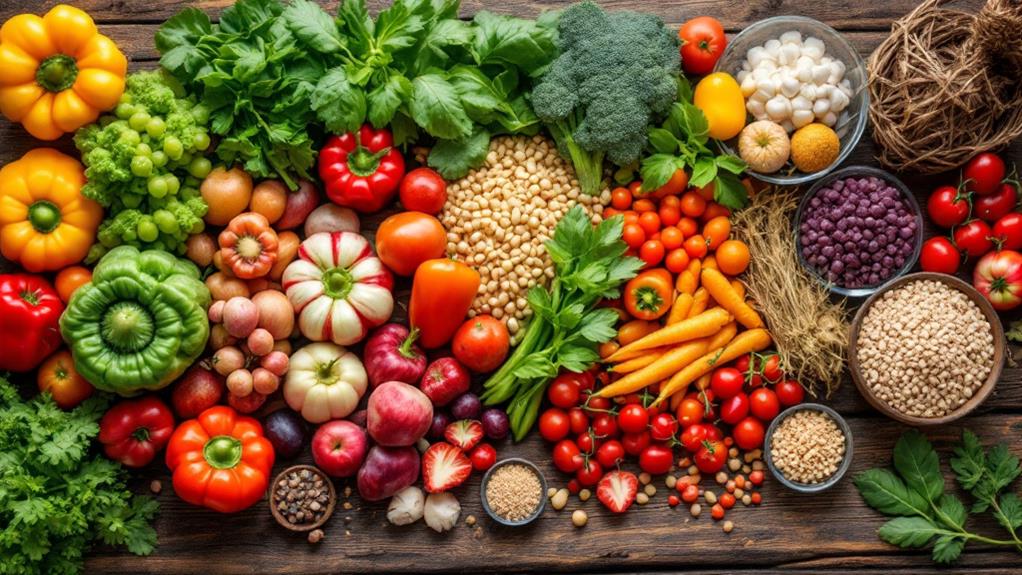
Despite the shortcomings of standard prison meals, inmates have found ways to broaden their dietary options through alternative food sources. Many prisoners assigned to Food duties can access the commissary, a place offering snacks, canned goods, and other items that improve their meal options. The ability to purchase these items largely depends on financial means, as a well-stocked commissary account allows for a more varied diet.
Moreover, some inmates engage in the exchange of homemade meals, buying from fellow prisoners who have honed their culinary creativity within the facility. These meals often provide a welcome break from the otherwise monotonous prison fare. Sharing unique prison cookbooks, inmates swap recipes and tips, turning limited resources into imaginative dishes.
Gardening programs in select facilities also contribute to alternative food sources. These programs not only supply fresh produce but also foster responsibility and self-sufficiency among participants. Inmates involved in gardening gain access to vegetables that improve both nutrition and taste.
To summarize, inmates utilize several alternative food options:
- Commissary purchases: Access to extra items with the right financial means.
- Homemade meals: Variety through culinary exchanges.
- Gardening programs: Fresh produce and a sense of responsibility.
Global Perspectives
Across the globe, the quality of prison food varies greatly, reflecting each country's approach to inmate welfare. In Norway, for example, inmates are treated to gourmet meals prepared by professional chefs, highlighting a commitment to high nutritional standards and general well-being. This stands in stark contrast to the United States and other regions, where correctional systems often struggle to meet even basic dietary needs. Nutritional deficiencies in these areas can lead to significant health issues for inmates, both during their incarceration and after their release.
Cultural influences play an essential role in shaping dietary preferences within prisons. Many countries tailor their menus to reflect the local population's customs and traditions, ensuring that meals are both culturally appropriate and nutritionally balanced. However, the enforcement of legislative regulations that guarantee minimum nutrition standards is inconsistent across the globe. This inconsistency can severely impact inmate welfare and health outcomes.
Research underscores the need for thorough dietary reforms in correctional systems worldwide. Poor prison diets have been linked to long-lasting health issues, emphasizing the importance of ensuring adequate nutrition. By addressing these disparities, you can help improve the health and welfare of inmates everywhere, leading to better rehabilitation and reintegration outcomes.


